Most TV series, whether comedy or drama, have a bottle episode at some point. And they can often take pride of place in the series’ history. They can serve as a crucial moment to bring together important themes in a focused way. Whilst practically they can also serve as a budget saver within the middle of a series, restricting all the action to one location.
In this article we’ll take a look at what makes a great bottle episode, the key steps of writing one and some of the best and most famous examples.
Table of Contents
- What is A Bottle Episode?
- Why Are Bottle Episodes Used?
- How Do You Write A Bottle Episode?
- 1. Use Limitations To Your Advantage
- 2. Make Things Difficult For Your Characters
- 3. Give The Characters Something To Do
- 4. Use Conflicting Characters
- 5. Give the Episode a Focus
- Great Examples of Bottle Episodes
- Friends – ‘The One Where No One’s Ready’
- Breaking Bad – ‘Fly’
- The Sopranos: ‘Pine Barrens’
- To Conclude: What To Remember About Writing Bottle Episodes
- In Summary
What is A Bottle Episode?
Bottle episodes require a big amount of imagination in a restrictive setting. TV series have a fixed budget, and while you could think production costs would be spread evenly across episodes, it’s actually far from it.
- A bottle episode is a low budget episode, primarily set in a single location, often with a reduction of the main cast.
- These will normally be episodes in the middle of the series where the budget has been prioritized mainly towards the season finale.
Not only do they serve as budget savers though, but they can also provide a change of pace and illuminate some of the series’ running themes. They can shine a spotlight on characterisation amidst heavy action, or force characters into a revealing situation.
A bottle episode will typically:
- Take place in one location or in a restricted amount of locations compared to usual.
- Take place within a restricted period of time.
- Feature minimal characters compared to the rest of the series.
- Center around a particular problem or situation that needs resolving by the end of the episode.
Why Are Bottle Episodes Used?
Imagine your favourite TV series, and there will likely be at least one bottle episode within that series. This is often the result of production companies spending more money on certain episodes. Whether it is a specific stunt, effect or an exotic location, producers will invest money in the most important episode of that series.
This is why we often see a season finale set in a one-off location. For instance, the Friends Season 4 finale, was set in London (where Ross marries Emily) and divided into two parts.
One week we see an epic bloodbath full of explosions & effects, next week, we might find our characters stuck in an elevator, opening up to each other. Writers have to constantly adapt to the locations and storylines they have at their disposal.
Bottle episodes, though they restrict writers to one setting and a certain number of characters, also open up opportunity for creativity. And in recent years bottle episodes have gone from just money savers to opportunities for the creative team to really flex their creative muscles. A bottle episode can be and often is a showpiece within the series.

Let’s look at the essential building blocks of writing a bottle episode.
How Do You Write A Bottle Episode?
1. Use Limitations To Your Advantage
Whatever your setting is, be it an elevator, locked room or underground bunker, you’ve got to use the location to heighten the drama. Let’s say your location is a closet, and you have two characters that are locked inside it. How could you use this to your advantage?
- Be creative! Raise the stakes for your characters and make them struggle.
- If the story involved characters stuck in a lift, and one of them happens to be an electrician, the situation would be resolved within no time, lacking the drama & conflict all scripts need.
Furthermore, setting the episode in one location allows you to really explore the contours of that location. What is its atmosphere? If it’s a previously visited location, is there something we (or the characters) might have missed up until this point?
Make the most of the setting and its unique characteristics and make sure the characters have a relationship with the setting. A singular location can apply pressure to the characters and we need to feel this in the drama.
2. Make Things Difficult For Your Characters
Nothing should ever be simple for your characters. We as viewers enjoy seeing characters struggle, overcoming tough situations and developing as the story progresses.
For example, one of your characters could have an important date, that should they miss, could end the relationship at hand. Or perhaps, in confinement, one of your characters reveals a secret, which causes conflict between them and another.
Sometimes we see a character knowingly trap someone in a situation, to prank them, but it backfires. This is a great way to instil conflict into the episode. One character is unaware the entire situation was a prank gone wrong, whilst the other, feeling guilty, has to hold their tongue.
Again, the bottle episode is about pressure. And the characters have to both feel and manifest that pressure in their actions.
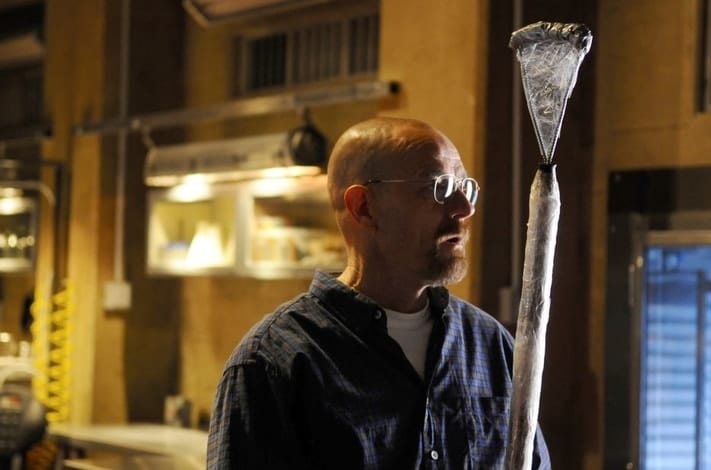
3. Give The Characters Something To Do
Keep your characters busy. It’s important that you know your characters inside and out, and how they would react in certain situations.
For example, the plot of your episode might be a character cooking a meal for their boss, with the episode shot in the kitchen. There’s a lot they could be doing and also a lot of things that could go wrong.
- You could have your character frantically trying to get everything perfect, only for the stress to overcome them.
- They might have been missing an ingredient and have to improvise. One question to ask is what can you tell your audience about this character?
- Is this a person who can stay calm under pressure? Or is it someone who falls to pieces over the slightest problem?
The characters within a bottle episode need to be preoccupied. This way, the limitation of the setting is distracted from. Whilst there’s no (or little) literal, physical movement, the character’s emotional movement will make up for it.
4. Use Conflicting Characters
Who wants to watch an episode starring two characters who get along spectacularly? Not many people. Given the limitations of the setting, conflict through dialogue and actions are more important than ever in a bottle episode.
There has to be an imbalance in the characters’ relationships. We need there to be disagreements that create conflict and consequently drive the episode along.
The characters’ relationships also need to have an arc within this bottle episode. They need to go on a journey together, one that includes conflict but one in which some kind of resolution (if only temporary) is arrived at eventually.
5. Give the Episode a Focus
Perhaps the most important element of a bottle episode is what is at its center. What are the characters focused around? What is driving the plot? The episode should center around something with a resolution in sight, whether it be an event, task or problem to solve.
There needs to be some kind of unique reason for the characters and story to be trapped in the singular location, where previously the series has been vast in its use of locations.
The actual focus might not be important to the series overall and you might even forget what it was after a few episodes. But the focus, whatever it is, needs to be a vessel for other important thematic and character elements.
Great Examples of Bottle Episodes
Let’s take a look at three great bottle episodes and what they demonstrate about how to construct a bottle episode.
Friends – ‘The One Where No One’s Ready’
Potentially one of the best examples of a bottle episode. Even though the episode runs for just 22 minutes and is in one location (Monica & Rachel’s apartment) there’s lots going on.
Why does this work so well as a bottle episode? Well, let’s look at the events that take place during the episode:
- Ross is to give a speech at a museum benefit and is consistently hurrying the rest of the friends to get ready.
- Chandler & Joey argue about the fact Joey stole Chandler’s seat while he went to the bathroom. Their squabbling leads to them spilling a drink on Phoebe’s dress, causing further delays
- Monica hears a voicemail from her ex, Richard, and digs deep to find out whether it was an accident, or whether he wants to get back together.
- Rachel, dating Ross at the time, takes forever to pick the perfect outfit – which frustrates Ross even more.
- Ross snaps and shouts at Rachel, who then refuses to go.
Straight away, the stakes are high for Ross, who places importance on this night for this career. For Ross, the clock is ticking and it’s up to him to get his friends out of the house.
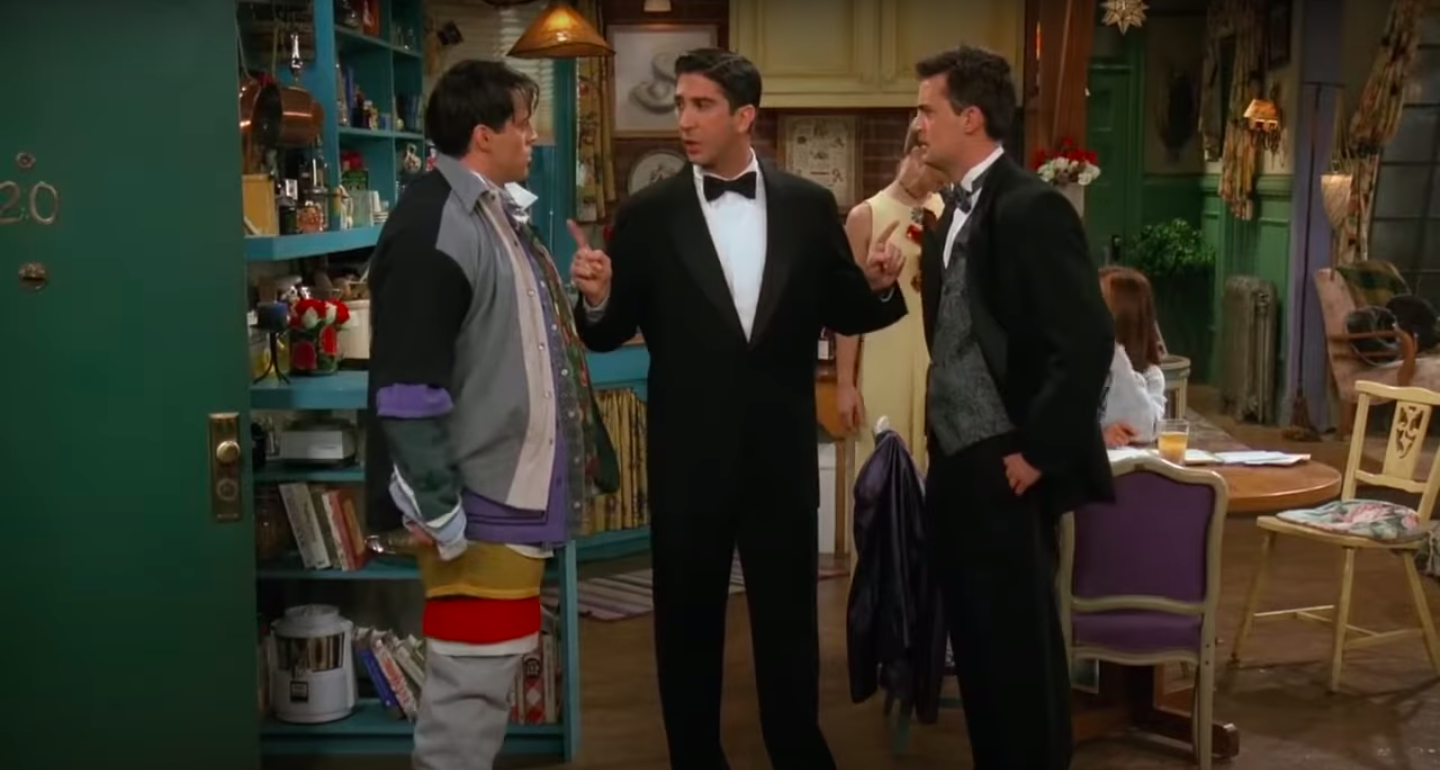
What makes this a good example of a bottle episode?
Looking back at the five things a bottle episode needs, do the writers of this episode tick the boxes?
- Using limitations to your advantages?
- Though it’s set in the main room of the apartment, the plot fits perfectly within it. Each of the characters can appear on/off-screen at various times. For this episode, they actually filmed it in real-time, which highlights the talent and skill of the actors.
- The difficulty for the characters?
- Ross finds himself in the middle of everything. Time is running out, but what with Chandler & Joey’s childishness and Rachel’s casual approach, things get more and more difficult. Not only that, but Ross goes from hurrying Rachel to then trying to convince her to go.
- Do the characters have something to do?
- Each of the characters has something going on. Of course, when you have a show with six main characters, that’s more of an advantage in terms of making things busy. This keeps the story entertaining as we switch between them for different sub-plots.
- Conflicting characters?
- Absolutely. Ross is pretty much conflicting with all the friends for the entire episode. It’s only a matter of time before he snaps. When he does, Rachel then becomes in conflict with him.
- A Focus?
- The episode is centered around Ross’ event, which everyone is trying to get ready for.
Breaking Bad – ‘Fly’
Vince Gilligan’s Breaking Bad is the go-to for TV writing. This particular bottle episode, ‘Fly’, is set predominantly in the meth lab and features the two main characters, Walter White & Jesse Pinkman.
The plot of the episode is that a fly has infiltrated the lab, and the pair must kill it before it contaminates their batches of meth. In short, it’s 45 minutes of Walt & Jesse trying to kill a pesky fly. That alone sounds distinctive.
This is actually the lowest-rated Breaking Bad episode, according to IMDb, with a rating of 7.8/10 (which in terms of the worst episode showcases Breaking Bad‘s high standards). However, some people also rate it as one of the best episodes in the series. There are a few reasons for this division of opinion:
- Fans have been accustomed to dramatic and thrilling episodes previously, so a bottle episode perhaps doesn’t meet the fans’ expectations.
- Even though there isn’t as much drama as anticipated, we learn more about Walt’s character and how his life as a criminal has transformed him.
- The pace is slow and there is a lot of dialogue, monologues and introspection.
- There is a singular and mundane focus for the episode – killing the fly. This frustrates and fascinates people in equal measure. Its simplicity can hold a lot of meaning or seem like a boring task to watch.
What this episode does perfectly is delve deeper into Walt’s character. Walt isn’t just annoyed that the fly might be a contamination.
Truly, Walt is anxious about toeing the line working for Gus Fring, worried that one little slip up might lead to his death. At the beginning of the episode, we see Walt struggling to sleep. This highlights his prior anxiety, which he consequently channels into the fly.
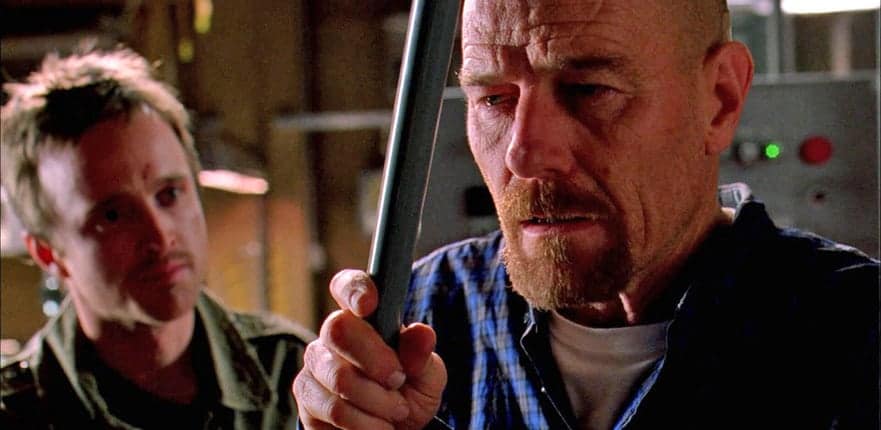
Why does this work well as a bottle episode?
- It ticks all the boxes. Walt & Jesse are kept busy, trying to kill the fly.
- Though it’s mainly set in the lab, the symbolism in this script is genius. The difficulty they face is the meth being contaminated, which is more important to Walt than Jesse, conflicting their ethics and professionalism to the job.
- For Walt, the lab is his place of work, his creative space to do what he does best – cook meth. The fly is a fear of imperfection, which drives Walt crazy.
- Importantly, the episode uses conflicting characters. Walt & Jesse have adverse personalities. Walt is professional, manipulative, and self-centred. Jesse, on the other hand, is reckless and maintains that slacking student/boring teacher dynamic with Walt.
- But the fly also symbolizes Walt’s desire for control and his wrestling with the fact that in light of working under Gus Fring, he doesn’t have it.
- The characters haven’t been particularly close in recent episodes. But in this episode, they come together.
- Initially, Walt’s obsession with the fly drives Jessie crazy. But soon enough, he’s helping Walt and seems to come to understand that Walt might be feeling the pressure of their work and channeling it into killing the fly.
The Sopranos: ‘Pine Barrens’
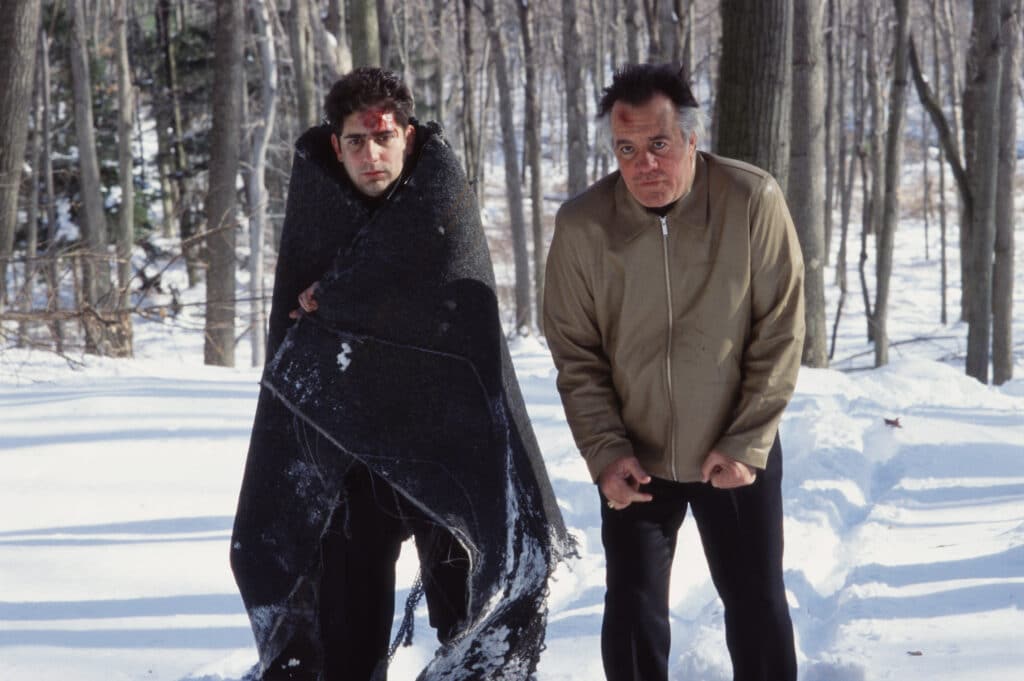
Unlike the Breaking Bad bottle episode, The Sopranos episode ‘Pine Barrens’ is more uniformly hailed by critics as one of the best in the entire show.
The main plot of this episode is: Christoper & Paulie mess up a simple collection from a Russian mobster, leaving them stranded in a snowy wood, almost freezing to death. Their only hope is Tony being able to track them down.
Right from the off, we have two dysfunctional, contrasting characters in Paulie & Chris. These are two characters that throughout the series are known to lose their cool. Putting them both in a life or death situation is genius in terms of conflict and entertainment.
- To begin with, it’s just a standard job, collecting money from Valery – A Russian Mobster. However, when Paulie is angered by his attitude, Valery ends up dead (or so they think…).
- Little do they know Valery is a former Russian Commando. As they attempt to dispose of the body, Valery manages to escape deeper into the woods, followed by Paulie & Chris.
- Tony orders them to kill his guy no matter what, but this leads to them getting lost in the woods, with night approaching.
- Soon, we find them in an abandoned van, carpet wrapped around them, sucking on ketchup packets for food, blaming each other.
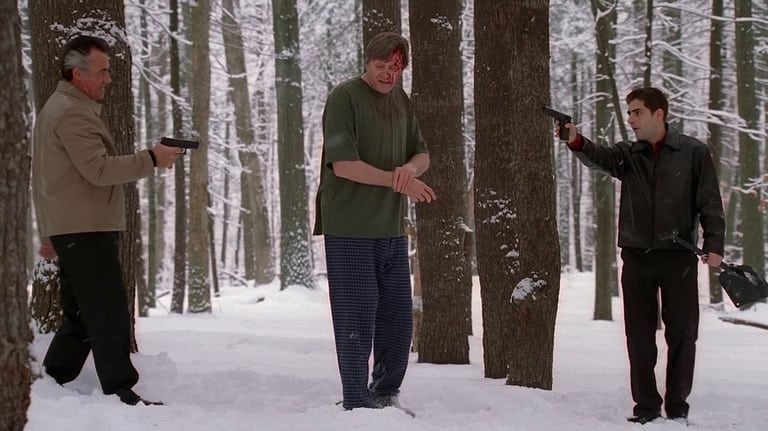
Why Does This Work Well As a Bottle Episode?
There’s a lot this episode has going for it, not only to do with Paulie & Christopher’s plot, but also the sub-plot of Tony – who at this moment is struggling to keep a balance between his family & mistress.
- Compared to an average Sopranos episode, this one uses fewer locations as we mainly stick with Paulie & Christopher. The location of the woods is restrictive as it is barren and night is approaching.
- What the writers do that works so well is fully delve into Paulie & Christopher’s characters. And we as the audience are along with them on this journey.
- The stakes are huge as they could easily die. At the end of the episode it’s only because Paulie shoots a makeshift shoe in frustration, that alerts Tony, who is searching the woods for them.
- Paulie & Christopher have a love-hate relationship and tensions boil as things become more difficult for the pair. We as the audience want to see them argue and almost kill each other, as this is what we have grown to accept from these characters.
This episode brilliantly highlights the key elements of a great dramatic bottle episode – tension, high stakes, a difficult problem to solve and a unique, specific location.
To Conclude: What To Remember About Writing Bottle Episodes
Just because you’re restricted in location, doesn’t mean you can’t have significant action. Think of the location and how your characters would interact with it. Think of all the potentials that location can have and all the potential pressure it can put on your characters when they’re within it.
A bottle episode is a perfect opportunity to apply pressure to your characters, calcify running themes and showcase your creativity.
What can you achieve in a bottle episode that your usual action won’t allow? This is the essence of creating a good bottle episode, forcing your characters into an unusual situation with external pressures revealing something specific and unique that will, overall, move the rest of the series’ plot forward.
In Summary
A bottle episode is an episode of a TV series, primarily set in a single location. The episode will be set within a restricted time period and typically focus around a singular event. It’s named a ‘bottle’ episode as it is self-contained, resolving the issues brought up within the episode in the episode itself.
The main purpose of a bottle episode is to keep production costs down or to serve as a showcase for the series. It can be a break from the series’ typical action and an opportunity for the creators and cast to flex their creative muscles.
Two characters might be trapped within a location, with a primacy focus to concentrate on. The pressure of these two factors will exert on the characters and reveal important elements of plot, character or theme. For example, a couple may be trapped in an office room, be trying to get out and reveal feelings about one another.
Bottle episodes are dependent on choosing a location that is simple but effective. Use your limitations to your advantage, by giving your characters things to do during scenes. Always give your characters a problem to deal with, one that they can’t just walk away from, in order to heighten the conflict and drama.
- What did you think of this article? Share It, Like It, give it a rating, and let us know your thoughts in the comments box further down…
- Struggling with a script or book? Story analysis is what we do, all day, every day… check out our range of script coverage services for writers & filmmakers.
This article was written by Sam Lyne and edited by IS staff.
Get *ALL* our FREE Resources
Tackle the trickiest areas of screenwriting with our exclusive eBooks. Get all our FREE resources when you join 60,000 filmmakers on our mailing list!

